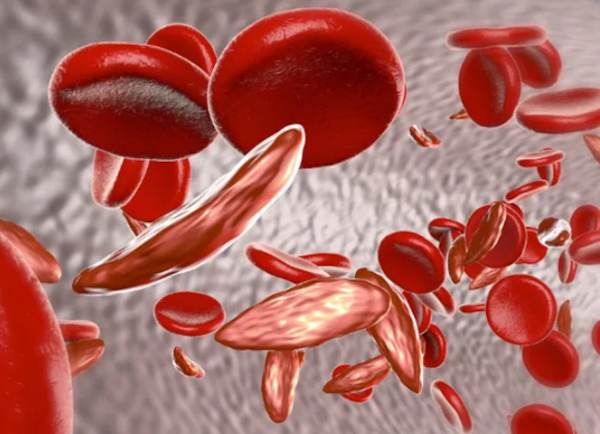Kenya’s Ministry of Health has established a multisectoral team to help manage sickle cell disease.
The ministry says it is also implementing health system reforms to accelerate control interventions for sickle cell disease, with policy guidelines for infant screening to be launched soon.
On Friday, Rashid Aman, the chief administrative secretary of the Ministry of Health, said that the team would help reduce the new cases since approximately 14,000 children are born with the disease annually.
Aman said the guidelines would be implemented in phases and ensure that infants are screened and linked to care.
“We expect the team to spearhead advocacy, screening, diagnosis, surveillance, and research in addressing the disease that has become a big burden in the country,” Aman said during the commemoration of World Sickle Cell Day in Nairobi.
Speaking during the celebration of World Sickle Cell day celebrations in Nairobi, Chief Administrative Secretary for Health, Dr. Rashid Aman said the guidelines which will be implemented in phases, will ensure that infants are screened and linked to care. 2/10 pic.twitter.com/Im3sM0pSaY
— Ministry of Health (@MOH_Kenya) June 17, 2022
Aman said that at least 240,000 children in Africa are born each year with sickle cell disease, noting that with the absence of routine newborn screening and appropriate treatment, an estimated 50 percent to 90 percent of the minors born with the condition die undiagnosed before their 5th birthday.
Data from the ministry shows that in Kenya, 6,000 children are born with the disease. The disease is common across Kenya, with high disease burden pockets in Western, Nyanza, and Coastal regions.
In the western region, it is estimated that as high as 18% of children are born with a Sickle Cell Trait, and 4.5% will end up developing SCD.
In the lake region, it is estimated that about 17% of children are carriers of the trait, with 0.6% having SCD, while in the coastal region, using inpatient data, almost 1% of inpatient children have SCD and are nearly 20 times likely to die compared to admissions of other morbidities.
Sickle Cell is a genetic disease characterized by a change in the shape of a red blood cell, from a smooth circular shape to a crescent shape, which can result in the blockage of small blood vessels.
Kenya plans to tackle the disease through the Universal Health Coverage (UHC), which will ensure that populations and communities receive the health services they need without suffering financial hardship.
The UHC includes the full spectrum of essential, quality health services, ranging from health promotion, prevention, treatment, and rehabilitation to palliative care.
“I am glad that this UHC commitment will cover sickle cell disease and other NCDs that suffer the most in out-of-pocket payments to access care over the lifelong course of the diseases,” Aman said.
The guidelines on the management of SCD in the country include newborn screening including having a nationwide screening of all newborns for SCD but this comes with challenges of limited resources.
The inclusion of children born at home has a financial implication for the health budget. A targeted approach where all newborns in high endemic areas are tested shortly after birth and early screening and testing of suspected children in potentially low endemic areas may be used as an alternative.
Penicillin Prophylaxis – Patients with SCD are prone to infection and death from encapsulated bacterial organisms like Streptococcal pneumonia due to splenic dysfunction that occurs within the first 5 years of life. It is, therefore, recommended that children with SCD should have penicillin prophylaxis started within 2 months of life and continued until 5 years of age.
Inoculation practices – Children with SCD are required to get all the vaccines as per the Kenya Expanded Programme on Immunization which covers infectious diseases that are relevant to SCD like Streptococcal pneumonia, Hemophilus influenza type B, and Hepatitis B.
Hydroxyurea Use – The Realizing Effectiveness Across Continents with Hydroxyurea (REACH) trial, in which Kenya was one of the four participant countries, confirmed the clinical benefits of hydroxyurea in SCD like reducing painful crisis, blood transfusion, and infection in patients.
Other guidelines include Blood Transfusion, Pain management, Psychosocial and Nutritional support as well as management of acute complications.
World Sickle Cell Diseases Day is commemorated on June 19th every year. The United Nations General Assembly established World Sickle Cell Day in 2008 to increase public knowledge and awareness of Sickle Cell Disease.
This year’s theme is “Break the silence: and Shine the light on Sickle cell disease.”
We are on Telegram. Click here to join our channel and stay updated with the latest East African business news and updates.




